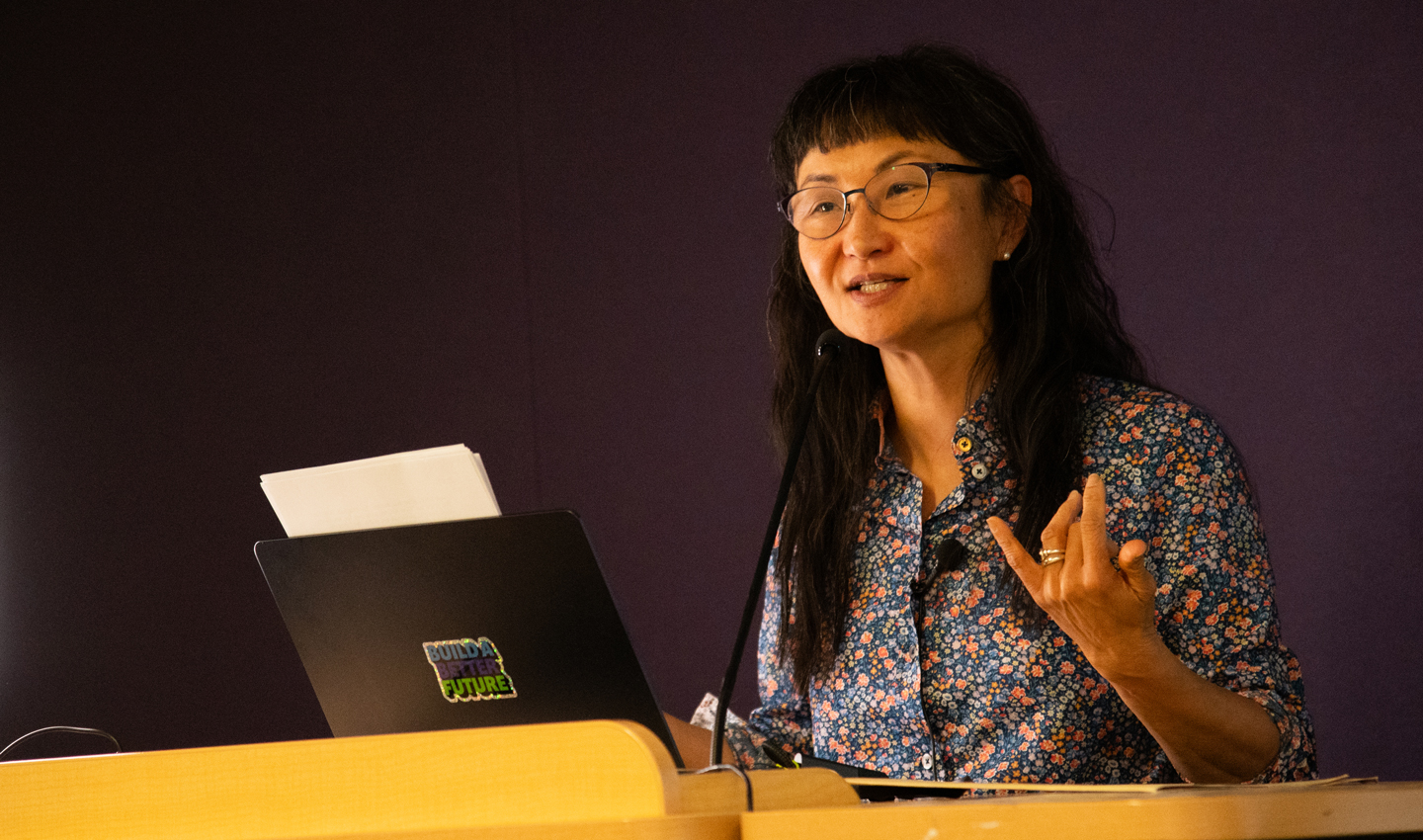Dr. Wendy Hui Kyong Chun began the 2024 Ed Mignon Distinguished Lecture with a seemingly innocuous phrase: “How are you?”
Chun, a professor at Simon Fraser University and a Canada 150 Research Chair, told the researchers, students and others at the University of Washington HUB that the roots of modern social media can be traced to social scientists’ studies conducted nearly a century ago.
Examining how social media companies track users’ feelings, Chun connected a five-year study of workers near Chicago in the 1930s to the modern state of “bossware.” This technology is used by employers to track their workers using methods such as monitoring mouse-clicks and audio and video recording.
Chun further established the links between studies conducted on Japanese American internees during World War II to present-day examples of sentiment analysis as a social media-based research tool. Sentiment analysis is a process that measures how positive or negative a feeling or statement is, with the goal of changing the behaviors of the workers or platform users.
In the May 16 lecture, Chun said she chose to study sentiment analysis “because it’s so creepy. There’s a long history of using sentiment analysis to justify surveillance, even though it always fails.” Sentiment analysis is often conducted on participants who have not truly consented to participate, she noted.
The studies conducted during the internment of Japanese Americans, when communities were split up and people were sent to camps throughout the West, are examples of this forced surveillance.
Between 1942 and 1946, internees were studied by social scientists. The goal was Americanization, said Chun. Monitored extensively by researchers from the U.S. Bureau of Sociological Research, the Japanese Americans in the study viewed the researchers as being from an FBI-like entity, Chun said. Japanese Americans including Richard Nishimoto documented the abuses of people interned in the camps, and this record eventually provided evidence for the Supreme Court’s ruling that the forced relocations were unconstitutional.
The surveillance of internees at the camps, Chun said, directly foreshadowed modern social media companies’ research and algorithms based on sentiment analysis.
“The early 20th century factory test room and U.S. World War II internment camps ground the ‘social’ in social media today,” Chun said.
Chun’s work argues that, “In order to make sense of AI, to understand its possibilities, its limitations and its logic, we need to engage the humanities and critical theory, in all its past and current forms — from structuralism to poststructuralism, from gender performativity, to trans studies.”
Her next book, “Sensing AI: Sentiment Generative Models and the Returns of Critical Theory,” will further explore these connections.
Asked what she wants the audience to take away from her lecture, Chun said, “The importance of understanding that our technical defaults are always engaged with history and culture.”
“By engaging, rather than ignoring this history, these worlds and these theoretical settings, how might we reimagine and re-create the ‘social’ embedded within our media technologies?” she asked the crowd.
This event marked the first time since the COVID pandemic began that the Mignon Lecture was held in-person. The goal of the Ed Mignon Distinguished Lecture is to inspire original thinking and foster creativity among students, faculty and researchers at the Information School.
Jin Ha Lee, professor and associate dean for faculty affairs, led the Information School faculty group that selected Chun as this year’s speaker and gave a warm introduction.
“It was brilliant, and so energizing,” said Carole Palmer, Information School professor and associate dean for research. Palmer gave the inaugural Mignon Lecture in 2013.
Palmer noted that Chun also held sessions with iSchool graduate students during her visit to Seattle. “Young scholars seeing people who inspire them, and who will talk shop with them, is always one of our goals,” Palmer said.
“The lecture brought in a lot of histories,” said MLIS student David Kreiss-Tompkins, who attended. “Especially of the internment camps and the incarceration of Japanese people, and how those [camps] were on Native American land, which I hadn’t known.”
“It’s been incredibly interesting and productive,” Chun said of her visit. “The iSchool brings together such different disciplines and ways of thinking that I haven’t seen at another institution.”
